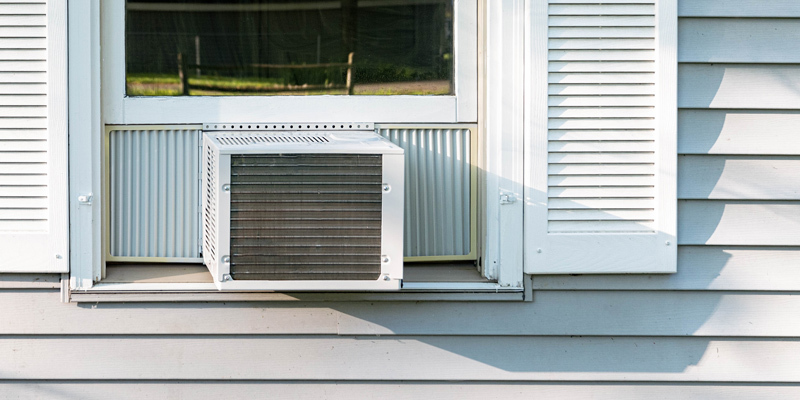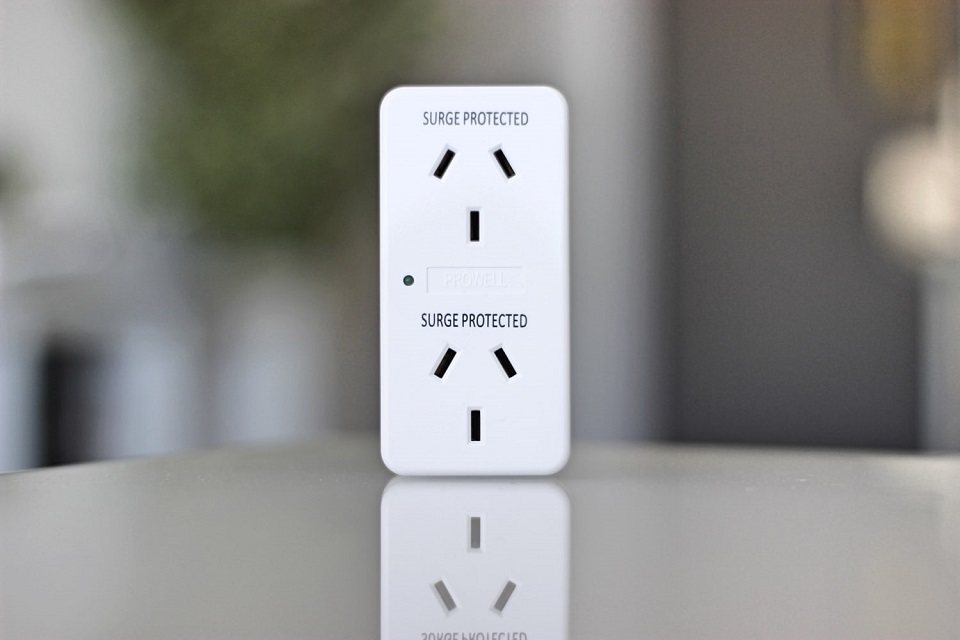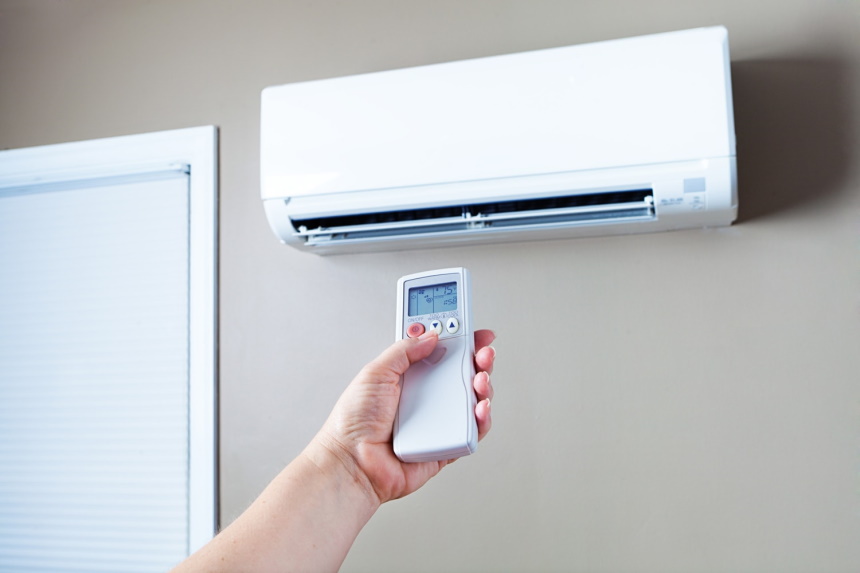

Dirty filters may clog an air conditioner and obstruct air circulation, causing the compressor to compensate by overheating. We discuss this and other factors that can cause an AC to malfunction and cost you a lot of money on repairs or replacement. In this article, we have compiled a comprehensive air conditioner troubleshooting guide that will help you take preemptive measures to prevent or mitigate damage to your AC.
We have featured the most common problems associated with an air conditioner as well as their possible causes and solutions. They include leaking water, thermostat failure and excessive heat and noise. We have covered problems ranging from simple glitches to serious damages that may need replacement of the affected component or the whole unit. By using these air conditioner troubleshooting tips, you can detect potential issues with your AC unit and determine whether to fix them yourself or seek professional help from a certified HVAC contractor.
This is every home owner’s nightmare during summer and the issue could range from simply forgetting to switch on the unit to electrical overload which could cause a fire or a faulty motor that will need to be replaced.
There are several reasons that cause your AC unit not to turn on. The most common root of this is a blown fuse or a circuit breaker that has tripped from power surge to protect your air conditioner from damage. Clogged condenser lines or a full drain pan may also trigger a shut-off safety switch. Other culprits include a malfunctioned thermostat or motor, frozen evaporator coils, or wiring issues.
Test the fuse with a multimeter. If it beeps, it is working properly. If it is a circuit breaker, you can easily reset it on the panel. For a thermostat, confirm that it is in cooling mode, receiving power to cycle on the unit and the set temperature is lower than your room temperature. We explain how to solve the other issues that make your unit fail in the AC problems and solutions featured in the rest of this guide.
If your AC unit is running without cooling your home, the most common cause would be blockage that restricts airflow.
Check whether the fan is running and the thermostat can properly regulate temperature to avoid inconsistencies. A faulty thermometer will need to be recalibrated or replaced. Next, inspect the filters, coils and compressor for buildup of dirt, debris and ice which hinders effective air circulation. The other reason could be a low refrigerant caused by leakage or from being charged incorrectly. If this is the case, your air conditioner will not be able to absorb latent heat and reduce humidity.
Clean or replace your filters at least every 3 months and use a fan to melt any sheets of ice on the coils. Refill the refrigerant if the levels are low and check for leakage which may need a professional to fix it. Confirm that the outdoor condenser is okay and clean it, if need be.
When trouble shooting AC problems, one of the common cases contractors come across is the issue of excessive heat. Did you know that your unit could be working well but overwhelmed by cooling a space that is larger than its designated coverage? For effective cooling, an air conditioner should have an output of 20 BTUs per square foot and 600 BTUs for every occupant.
High ceilings, exposure to sunlight and other heating appliances increase the BTU requirement by 10 percent.
An AC unit that is cooling an area larger than its recommended coverage might make you feel warm instead. Majority of these cooling units maintain an estimated temperature difference of 20 degrees between indoors and outdoors. So, expect reasonably higher temperature in hot seasons. You will also notice increased heat and humidity if the condenser coils are blocked because they won’t expel the heat absorbed from your room. Other things that may cause too much heat are poor insulation, a leaking ductwork that makes cool air escape, cooking or using heat-generating devices in the room, sunlight exposure, and a faulty outdoor condenser.
To maximize the cooling capacity of your AC, get an appropriately-sized unit for your home. Close blinds to limit sun exposure, insulate your windows, check condenser coils for obstruction, fix leaks in your HVAC system, and avoid appliances that add extra heat when the AC is running to prevent it from being overworked. You could also dissipate heat with additional fans. Mount window air conditioners on a closed window that is well insulated to isolate outdoor heat.
If your thermostat cannot read temperature accurately, then you cannot program it to cool your home when necessary. Before trouble shooting AC thermostat problems, you will have noticed temperatures higher or lower than your target temperature. Other indications of a defective thermostat are constant short cycles, and the air conditioner either not turning on or running non-stop when it does.
Your thermostat will not work if it is not receiving power or in case of a blown fuse or tripped circuit breaker. Other reasons that cause temperature discrepancies by affecting a thermostat’s ability to read and transfer signals are loose wiring, incorrect installation, buildup of dust and smoke, or a stuck or poorly calibrated anticipator.
Ensure the thermostat is powered and at a lower setting than the current ambient temperature. Level the thermostat if it has come loose, check the wiring and clean any grime from inner components. If these home air conditioners troubleshooting advice doesn’t work, then you may have to consult an experienced HVAC professional to check it out.
If your air conditioner is leaking, the likely reason is poor drainage. Warm air drawn from your house is cooled as it passes the evaporator coils. This forms condensate that is then drained into a pan or drain line. The leak may also be from water overflow from melting ice, so avoid running your AC in extremely low temperature.
Clogged drain lines and rusting or cracked drain pans are often responsible for water leak. Drains can develop mold or accumulate dirt and grime which obstruct water flow. A faulty pump may also cause a leak since it can’t expel water outside. When trouble shooting AC problems that cause indoor water leakage, check for ice buildup in the evaporator coils because it may be melting and draining into the pan, causing overflow.
Confirm that the condensate drain line is connected. Eliminate buildup of algae and fungi from a drain line by pouring vinegar. To unclog it, use a wet or dry vacuum. Clean or change filters and refill low refrigerant to optimize airflow and prevent ice buildup on coils. Turn off the unit for up to 24 hours to allow for defrosting. Check for leaks and either repair or replace the affected component.
Split models, such as the top-rated Klimaire KSIV012-H119-S consist of 2 parts, and the problem might be in the outdoor unit. In outdoor leaks, water forms under the outdoor compressor and not in your house.
The indoor leak AC problem and most of the solutions we provided above also apply to outdoor leaks. Both are caused by dirty filters, clogged drains and ice buildup on the coils although outdoor water leakage may also result from incorrect installation, cold outside temperature, or a loose AC seal that lets in warm air.
Your AC unit expels the extracted moisture outside through your drain system, so a blocked or broken system would cause flooding. Use the solutions we provided for indoor leaks to fix this. Install the AC away from fences and structures that reduce effective airflow and increase the formation of condensate. Inspect the outside compressor of a ductless air conditioner for leaves, dirt and debris that could cause clogging.
Regular maintenance of filters, coils and air ducts is advisable to remove any blockage that will limit airflow.
Home air conditioners troubleshooting experts mainly attribute poor circulation of air to accumulation of ice and grime on the evaporator coils which limits the refrigerant’s ability to absorb heat for dispersion. Obstruction in return air vent, low refrigerant and dirty filters are also cited as common causes.
Avoid installing the AC unit underneath decks or near plants and objects that could hinder intake and release of air. Ideally, you should leave a minimum allowance of one foot around the air conditioner. Otherwise, the compressor will run hot as it compensates for the reduced capacity. The heightened temperature will also affect the compressor’s lubricating oil and substantially reduce its lifespan from the standard 15 years.
To diagnose poor airflow, use an accurate thermometer to measure the inlet temperature and then the ambient temperature from approximately 20 feet away. The two temperatures should have the same value if your AC is working correctly. A higher intake temperature indicates faulty airflow.
In case of a window AC, even the most quality and time-proven ones like the Frigidaire Window-Mounted Median Air Conditioner won’t cool a room properly if it’s too sunny outside and there is warm air leaking in. This is why you should mount your AC in rooms with proper insulation to avoid fluctuations in temperature.
Let’s now talk about noisy AC problems and their solutions which vary according to the type of noise.
Banging and rattling sounds signify issues with mechanical components such as the compressor or the fan. A loud buzz indicates electrical problems caused by a defective contactor and capacitor, the two components that power the compressor and fan respectively. Loose components may vibrate, although loose fan parts like blades produce a whirring sound. A leaking refrigerant generates a hissing sound; squeaks are from faulty motor bearings; and whistling sound results from dirty filters and leaking ductwork.
Check for debris that could be clogging or bumping inner components. Next, inspect the motor bearings, compressor, fans and other inner components to ensure they are properly installed or connected. You can consult your AC’s manual for the steps involved. Otherwise, persistent strange noise should be checked out by a professional.
Usual sounds that don’t require home air conditioners troubleshooting are gurgling and bubbling ones made by the refrigerant as it cycles between coils, humming motors, and clicks and clunks at the end of a cycle. You may also have one of the AC units that produce a high-pitched sound at startup.
The U.S. Department of Energy Trusted Source Air Conditioning - Energy.gov Three-quarters of all homes in the United States have air conditioners. Air conditioners use about 6% of all the electricity produced in the United States, at an annual cost of about $29 billion to homeowners. As a result, roughly 117 million metric tons of carbon dioxide are released into the air each year. www.energy.gov estimates that 75 percent of all homes own an air conditioner. This translates to approximately 29 billion dollars annually in total cost of energy bills. Defective units increase the cost through expensive repairs and replacement. By following our home air conditioners troubleshooting guide, you can anticipate most of the issues and act accordingly. We have provided useful tips on preventative maintenance, minor DIY repairs and major problems that might need professional consultation.





